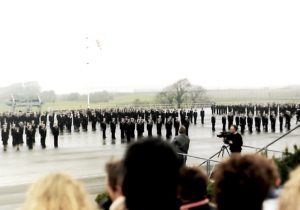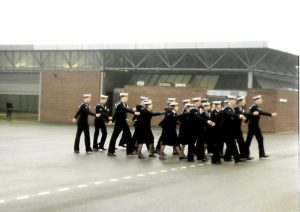

Age: 47
Job Title: Director of Estates and Facilities
When you were a child, what did you dream you would be when you grew up?
A Journalist, but I read somewhere that to study journalism would cost £26000 a year and as my parents couldn’t afford that I abandoned the dream.
What excites you most about STEM?
Encouraging and developing the next generation and showing them how exciting and fun engineering is.
What do you love about your current job?
I love that every day is different; it’s not mundane or tedious.
What does a typical day at work involve?
A typical day will involve discussions on future and current projects we are developing or working with other Trust divisions and departments on. We will receive requests for various works or projects needed by clinical teams. A variety of meetings, both at senior Trust level, STP level and within the teams.
What is the most unexpected thing about your job?
The fact that it is not all about engineering. There are budgets to manage, staff issues to manage (good and bad), contract management and soft FM services to oversee. As your career progresses so does your skill base outside of engineering.
Did you have any role models when you were younger?
My Dad and my sister’s friend Jane, who joined the Royal Navy as an aircraft mechanic.
What inspired you to do the job you are doing now?
When I decided that Journalism was no longer an option, I decided to look at the Royal Navy. This was influenced by the stories that Jane used to tell when she visited my sister. I loved hearing about her training and travelling, to a young 9 year old it sounded so exciting.
I fell into engineering by accident. I joined the Royal Navy at 17 with the aim to travel the world and learn a trade to fall back on when I left. I had to take three exams that profiled what role would suit you best. I came high in the engineer/maths sections.
The Navy had just opened engineering roles up for female candidates as part of the scope for females going to sea for the first time. I watched two videos of the engineering roles. One was a sailor happily soldering a circuit board, the other was a sailor running round in a white anti flash balaclava, I chose the soldering role!!
This was the start of my engineering career as one of the first batch of female WEMs and amongst the first to serve at sea.
When I left the Navy four years later, I wanted to stay in engineering and I applied for a role as an apprentice electrician at Hammersmith Hospital, which I was offered and this was the start of my NHS career.
What toys or games inspired you during your childhood?
Lego, I loved building things with Lego!!! My younger brother and I would build whole estates with Lego!!
Your favourite subjects at school?
I loved science because it wasn’t just the core subjects. We studied domestic electricity, science and crime detection and astronomy!! I also loved art but I am much more of a cartoonist than a landscape artist.
Qualifications: (school/college/university):
GCSE’S, C&G Electronic Servicing, C&G 236 Parts 1&2, ONC Building Services Engineering, HNC Building Services Engineering, BEng (HONS) Building Services Engineering.
In your words, what is a healthcare engineer?
A healthcare engineer is someone who wears many hats and needs an understanding of subjects that extends beyond just engineering. They need to understand microbiology to manage water systems, medical gases, power system both high and low voltage, ventilation, decontamination, fire safety. They need to be able to think clearly in an emergency, have excellent crisis management skills and know how to lead a team. They need to have accountancy skills to manage budgets, have HR skills to manage staff. They need to have a vast knowledge of health and safety to provide a safe, secure and compliant environment that not only meets service needs, but is safe for patients, staff and visitors.
Your reason for choosing this career? Why Healthcare?
It was initially the apprenticeship that made me choose healthcare when I left the Navy. However when you work in this environment and witness people at their most vulnerable, the empathy you feel is overwhelming. At any point that could be someone you love dearly needing the amazing care and treatment provided by the clinical teams. I stayed in Healthcare because at the heart of everything we do is the patients and it is our responsibility to provide the right environment and facilities that support our clinical teams to give the high quality care every patient deserve.
Tell me about your career path to date?
In 1990 I joined the Royal Navy as the second every female WEM(r) and amongst the first batches of females to serve at sea.
I left the Navy in 1994 and I was offered an electrical apprenticeship at Hammersmith Hospital. In 1997 the Trust entered me for the title of Junior Engineer of the Year with the Central London Maintenance Association, which I subsequently won. I was entered by my Maintenance Manager Phil Hudson. I progressed to Craftsperson and then in 1998 I was offered the post of Assistant Works Manager at the Hospital of St John & St Elizabeth. This was my first management role. Peter Monk was the Works Manager and the estates department consisted of the two of us and a small team of trade’s staff. It was a very steep learning curve that I loved. We also managed the EMBE and capital projects for the Trust. Very often Peter would be designing a new ward or office area and as he was mechanical bias, he would ask for my assistance with the electrical aspects of the project.
In 2002 I decided to I needed to work closer to home and I was offered the post of Estates Officer at Hemel Hempstead Hospital. Having gained management skills in my previous post, this role allowed me to develop them further.
In 2004 I was seconded to manage the Estates Department at Watford General Hospital, after a few months this became a substantive post.
In 2012 having already moved back to my home town of Oxford, I was offered the post of Senior Estates Operational Manager at the John Radcliffe Hospital. My line manager was Mervyn Phipps and when he decided to retire in 2014 I was seconded to the post of Head of Estates and Facilities. Two years later the new director Mark Neal made this a substantive post. During my time in this role, as a team we delivered the many award winning Energy Project and in 2018 we also won the IHEEM Estates and Facilities Team of the Year
And the Trusts Patients Choice Award in recognition of our outstanding contribution to the work of the Trust.
In November 2018 I was offered the post of Director of Estates at Birmingham Community Healthcare NHS FT. This post really interested me because it was the first Director post that I had seen that asked for an engineering background. I’ve been at the Trust nearly a year now and I have been really lucky to have a great Estates and Facilities team to work with, we have lots of ideas that we are formulating into various projects. I was also struck by how welcoming and warm the Trust is, with a CEO who has a great vision for the future.
It was through our Trusts Chairman that I met my current mentor Mike Hobbs. Mike has been so helpful in guiding me whilst I develop in my new role, especially adapting from a very operational role to very strategic one. I know that if I need any advice I can just email or call and he will talk me through the issue with pointers on how I can deal with certain aspects. When you do make such a change in your career, I think having someone like Mike to be able to tell you that its ok to ask what the anagram stands for at a senior leaders meeting makes all the difference.
What advice do you have for the Healthcare Engineers of the future?
Take every opportunity that is offered to you, remember that a leader is only as good as the team they manage and always leave the ladder down for the next generation of engineers following behind. Above everything else, remember that everything we do is to ensure that our patients are cared for in a safe, secure and compliant environment.
